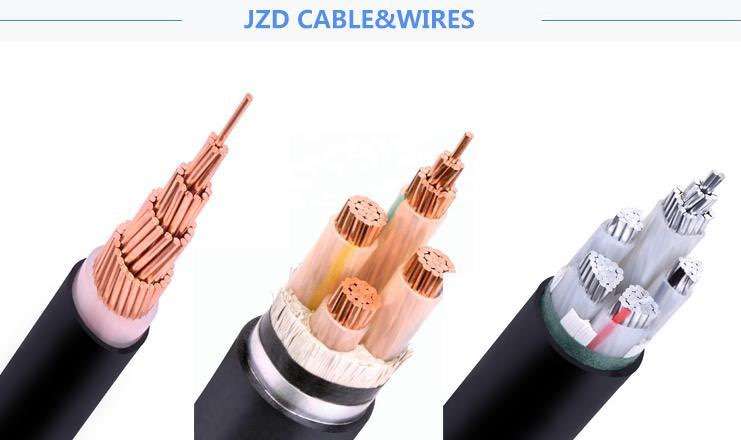 Author: Joey Wan
Author: Joey Wan  February 21,2022
February 21,2022

The most common used power supply cable are PVC insulated power cable and XLPE insulated power cable. Although they are both power cables, there are still lots of differences in terms of materials and applications. Let's closely take a look at the differences between pvc cu cable and cu xlpe cable. Of course this article only will discuss the low voltage xlpe and pvc insulated power cable, for high voltage power cable, another article will help you a lot.
As for the material used, PVC insulated power cable have a good price advantage. (PVC refers to the polyvinyl chloride which is more cheaper than the cross-linked polyethylene ). single core XLPE cable have better electrical cable properties. (That is 3 core XLPE cable: cross-linked polyethylene cable).
In terms of the main purpose, XLPE insulated power cables are mainly used to be fixed on transmission circuits with AC 50Hz and rated voltage of 6kV ~ 35kV. Its main function is to transmit power. PVC insulated power cable: It is more suitable for fixed installation in power plants with AC rated voltages between 450 volts and 750 volts.
Features of XLPE insulated power cable:
Simple structure
Lightweight.
heat resistance
Strong carrying capacity
not easy to melt
chemical corrosion
high mechanical strength
Features of PVC insulated power cable:
PVC is already a wide variety of common plastics worldwide and in a wide range.However, the stability of polyvinyl chloride is poor. The softening point is 176 degrees Fahrenheit and it begins to decompose at 266. When the PVC cable melts or catches fire, it emits toxic fumes, which are harmful to the human body.
4 reasons why you should choose purchase the XLPE cu cable instead of PVC cu cable
Heat resistance: The cross-linked polyethylene of the network three-dimensional structure has relatively good heat resistance. It will not decompose and carbonize below 572 degrees Fahrenheit, and the long-term operating temperature can reach 194 degrees Fahrenheit, with a service life of up to 40 years.
Insulation performance: XLPE maintains the original good insulation performance of PE, and further improves the insulation resistance. The dielectric loss is small, and the temperature is not affected by the temperature.
Mechanical properties: Due to the establishment of new chemical components between macromolecules, the hardness, stiffness, wear resistance and impact resistance of XLPE are improved to make up for the shortcomings of vulnerable adaptability and crack effects.
Chemical resistance: XLPE has strong acid and oil resistance, and its combustion products are mainly water and carbon dioxide, which are less harmful to the environment and meet modern fire safety requirements.
